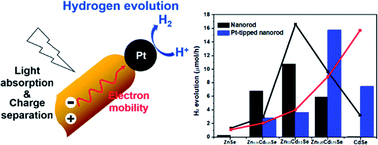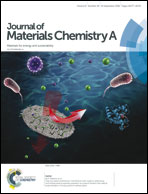Composition effect of alloy semiconductors on Pt-tipped Zn1−xCdxSe nanorods for enhanced photocatalytic hydrogen generation†
Abstract
Zn1−xCdxSe nanorods were synthesized with various compositions, and were employed as model catalysts for photocatalytic hydrogen generation. The hydrogen evolution rate was highly dependent upon the composition due to the conduction band edge potential and light absorption capacity. After the Pt deposition, however, the trend was altered remarkably with the quantum yield of the Pt-tipped Zn0.25Cd0.75Se reaching its maximum. This sudden change is mainly attributed to the mobility of electrons transferring to the metal tips, as well as light absorption and charge separation abilities.



 Please wait while we load your content...
Please wait while we load your content...